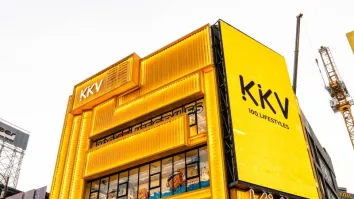Succeeding with big data and an omni-channel approach
Is new retail the retail saviour the industry needs in the region?
Declan Ee, co-founder of online furniture store Castlery, shares his thoughts on this whole new retail world powered by data.
Asia continues to embrace the mobile-centric economy, the way consumers interact with retailers is rapidly changing from traditionally shopping at storefronts, to e-commerce, and now to “new retail” — retail experience brought alive by the integration of offline, online, logistics and data across a single value chain.
With the way new technology is developing, retailers in Asia need to step up and start curating the retail experience they offer to savvy consumers.
In fact, online retail giants around the world are slowly but surely headed in the same direction. The stage is all set to indulge smart consumers in exciting new arrays of retail experiences.
Beyond omni-channel
It is a common misconception that new retail refers to online-to-offline (O2O), where retailers merely set up physical representations of their online stores. While O2O was a popular
marketing approach in the past two years with the advent of e-commerce, new retail demands for greater experience focused customer engagement and contextualisation through leveraging data technology.
Leading the charge in this global retail transformation is e-commerce giant Alibaba whose mercurial founder, Jack Ma, coined the term “new retail” at its investor briefing last year. Ironically, Ma believes that pure e-commerce business models are fast becoming “traditional businesses”.
To stay relevant in the rapidly evolving landscape of e-commerce, new retail entails an integration that seamlessly connects online presence, offline retail experience and logistics network along a single value chain. This complements the emerging strategic need to gather necessary data to create a strong retail experience for the increasingly discerning consumers of our time.
A fine example of this is Alibaba backed Hema supermarket, which now operates in more than 10 locations across Shanghai and Beijing in China.
The fine-dining grocery store carries a curated selection of 3,000 products from 100 countries, and has raised the bar for heightened consumer experience within and beyond store frontiers.
At Hema, consumers can either choose to order online via a mobile app and receive them within half an hour in a 5km radius, or scan barcodes at the store, pay via the Hema app and set up delivery. All the while, data on detailed hopping behaviour is captured via the same mobile app, so that Alibaba can continually simplify and personalise the experience through retail experiences such as organised events and dedicated food booths where they can get their groceries cooked on the spot.
In order to be a part of the new retail world, Asian retailers have to undertake a more proactive approach to create a truly full and engaging experience. As retailers, we can take a leaf out of Alibaba’s books and utilise data to make precise decisions on design, make, delivery and set-up to curate the journey of the consumer from the start. It is not just the integration of online and offline; it encompasses logistics and data too.
For example, retailers can utilise data on consumer behaviour as a guide to determine the layout of their storefronts.
Data that reveal information such as the most popular furniture pieces online can be reflected in the way each product is being presented to the consumer in physical stores
Built for smart consumers
The demand for a more intricate personalisation of the shopping experience is fuelled by the ever demanding millennial consumers who are accustomed to variety, choices, customisation and personalisation in products and services. Thanks to new technologies, millennials are the savviest consumers to date with reportedly an expected combined disposable income of US$6 trillion.
New technologies such as virtual reality, augmented reality and big data are able to enhance the convenience offered to the consumers of today who are equipped with information at their fingertips. Moreover, this generation of consumers are always on the lookout for items that not only fulfil their wants, but also fit into their lifestyle and represent their personality.
For example, a service such as Amazon Go would excite millennial consumers who are the biggest advocators of convenience through technology. The service not only removes the need for long queues and checkouts, but also sends live messages based on the consumer’s locations and behaviour within the store, alerting them of items they walk past that are relevant to their lives.
In order for shopping malls to attract this particular generation of consumers, it is important to speak their language to tell the brand’s story.
Other than presenting a certain look and theme, retailers have to engage the consumer as part of their own brand’s journey and identity.
Making retail great again
Essentially, new retail simply refers to the experience of shopping for the next decade at least. Shopping is no longer a transaction where you pick up something you need or are made to think you need. The modern consumer is more concerned about the details of their retail experience with the brand.
Gone are the days of window shopping. Instead of browsing a store and leaving with nothing, new retail means discovering something online, engaging with it in the physical stores,
making that purchase and finally having the item you desire at your convenience.
In this digital era where we bow our heads to smart devices, new retail is here to make us look up and around again, to experience the same world we always knew, but now in a shining, shimmering and splendid way.



















 Advertise
Advertise





